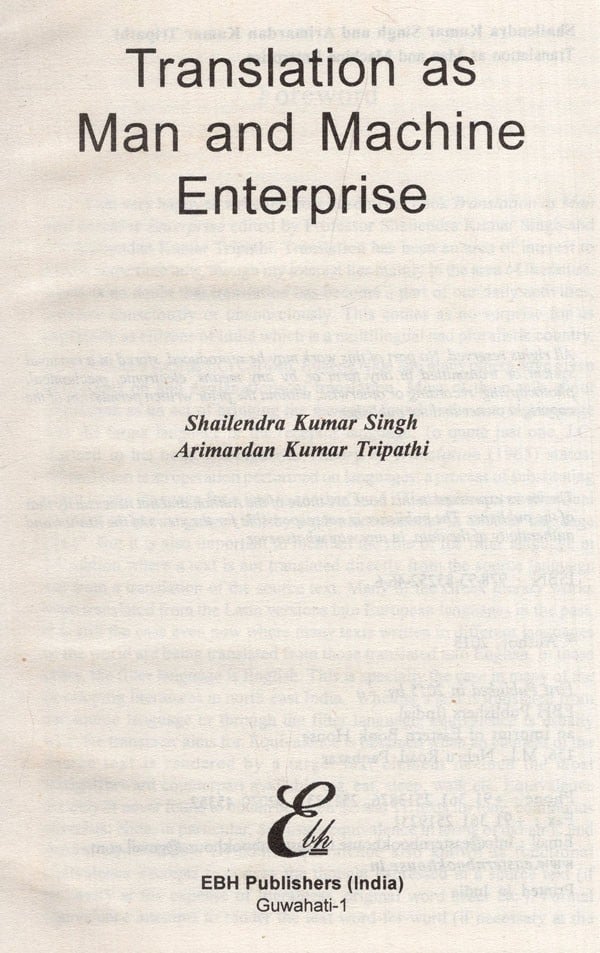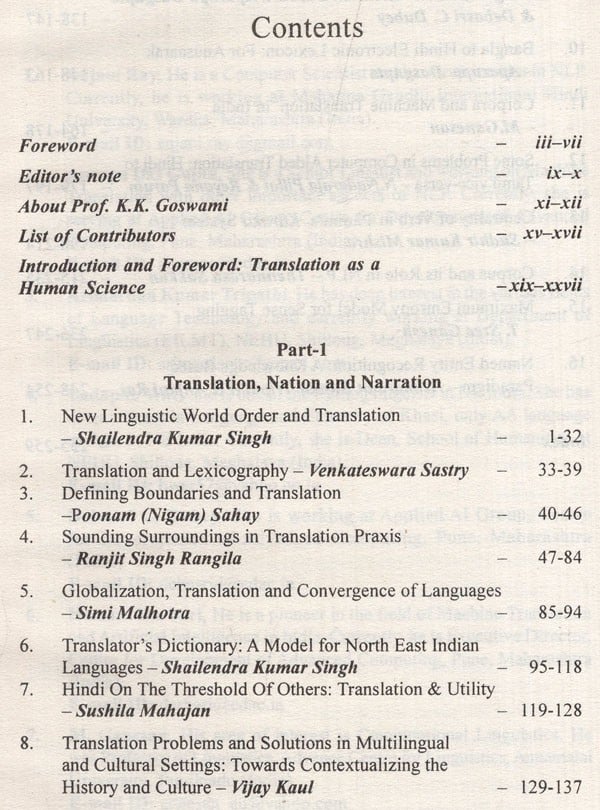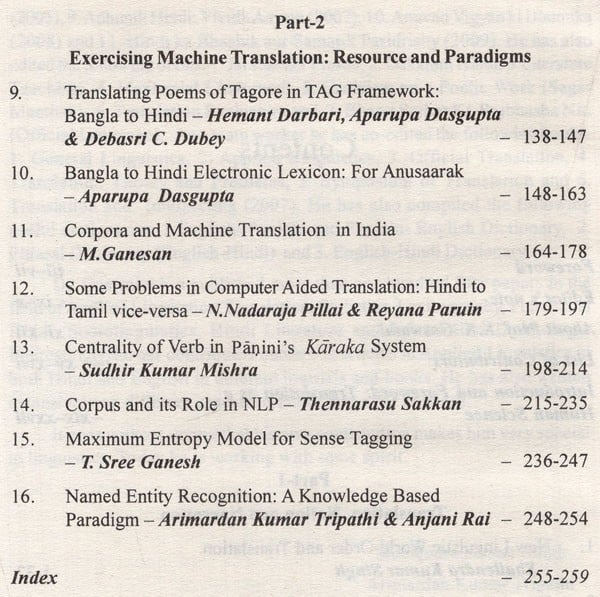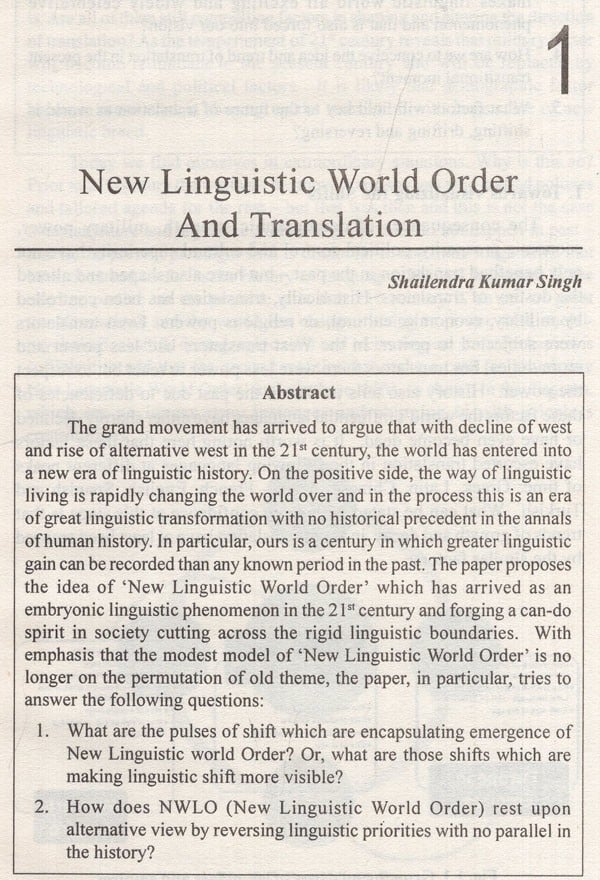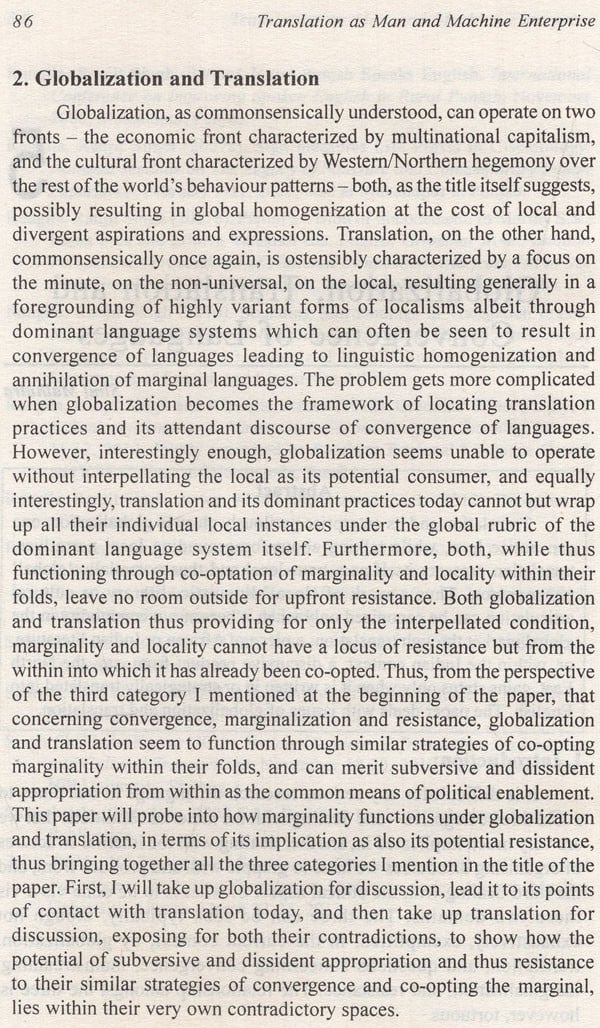
Translation as Man and Machine Enterprise (An Old and Rare Book)
Book Specification
| Item Code: | UAW455 |
| Author: | Shailendra Kumar Singh and Arimardan Kumar Tripathi |
| Publisher: | EBH Publishers, Guwahati |
| Language: | English |
| Edition: | 2015 |
| ISBN: | 9789383252466 |
| Pages: | 286 |
| Cover: | HARDCOVER |
| Other Details | 9.00 X 6.00 inch |
| Weight | 450 gm |
Book Description
The book includes coverage of new topics ranging from translation Machine Translation in India. It includes contribution by leading scholars in India to address major aspects of translation and Machine Translation. In particular, this book introduces the major issues that will define the field, scope and future of translation in the 21st century.
The book also highlights that in the present era of globalization, market realism and technology are the major factors in deciding the trends of translation. The present volume guarantees holistic approach to translation as an enterprise.
The book is prepared in the honor of Prof. Kumar Goswami.
Shailendra Kumar Singh is Professor at the Department of Linguistics, North Eastern Hill University, Shillong. He has authored and edited several books/volumes such as Multilingualism (2001), Rethinking Multilingualism: Issues and Problems (2009), Longman-CIIL English-English-Hindi Dictionary (2011). Linguistic Landscaping in India (2002), Language, Culture & Society (2004), Translation: Issues & Perspectives (2004), Linguistic Ecology Manipur (2011), Linguistic Ecology Meghalaya (2013). Tibeto-Burman Linguistics of North-East India (2014) and Austro-Asiatic Linguistics of North-East India (2014).
He is currently completing the following books: (1) New Linguistic World Order, (2) anuvAd: tlsarl pramprA kl khoj. (3) bhASHA pAristhitikl: bhArtly evm vaishwik pariprek shy and (4) bhASHA, samay evm saMvAd. His special interests are: Translation Theory, Multilingualism, Contact Linguistics and Theoretical Linguistics.
Arimardan Kumar Tripathi is a Computational Linguist. His Ph.D. work is on Anaphora Resolution. Currently, he is working at EILMT, Department of Linguistics, NEHU, Shillong. He is also an editor of a Web Research Journal (www. hinditech.in).
He is author of bhAShA ke samkAlln sandarbh (2012), co-author of bhASHA pAristhitikl: bhArtly evm vaishwik pariprek shy and co-editor of bhASHA, samay evm saMvAd. His special interests are: Language Technology. Discourse Analysis and Hindi Linguistics.
I am very happy to write this foreword to the book Translation as Man and Machine Enterprise edited by Professor Shailendra Kumar Singh and Dr. Arimandan Kumar Tripathi. Translation has been an area of interest to me for some time now, though my interest lies mainly in the area of literature. There is no doubt that translation has become a part of our daily activities, whether consciously or unconsciously. This comes as no surprise for us especially as citizens of India which is a multilingual and pluralistic country.
Scholars such as J.C. Catford, Eugene Nida and many others have given definitions on and explanations of translation. Most of them talk about translation as an act of bringing the message found in the source language into the target language or the receptor language. To quote just one, J.C. Catford in his book A Linguistic Theory of Translation (1965) states: "Translation is an operation performed on languages: a process of substituting a text in one language for a text in another" and "The replacement of textual material in one language (SL) by equivalent material in another language (TL)". But it is also important to mention the role of the filter language in translation where a text is not translated directly from the source language but from a translation of the source text.
Many of the Greek literary works were translated from the Latin versions into European languages in the past. It is still the case even now where many texts written in different languages of the world are being translated from those translated into English. In these cases, the filter language is English. This is specially the case in many of the developing literatures in north-east India. Whether a text is translated from the source language or through the filter language, equivalence is usually what the translator aims for. Equivalence is obtained when an element of the source text is rendered by a target text element deemed the most straightforward counterpart available e.g. eat, sleep, walk etc. Equivalence is rarely or never found to obtain between SL. and TL texts for long, continuous stretches. Nida, in particular, discusses equivalence in terms of dynamic and formal equivalence. Dynamic equivalence also known as functional equivalence attempts to convey the thought expressed in a source text (if necessary at the expense of literalness, original word order etc.).
**Contents and Sample Pages**
